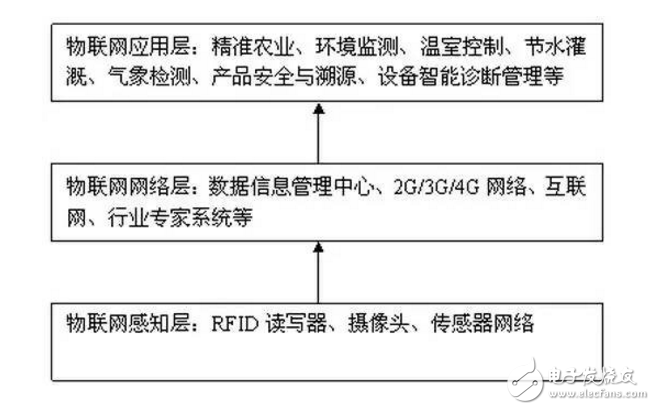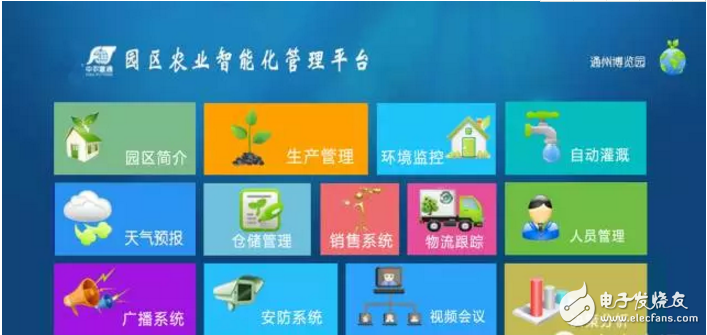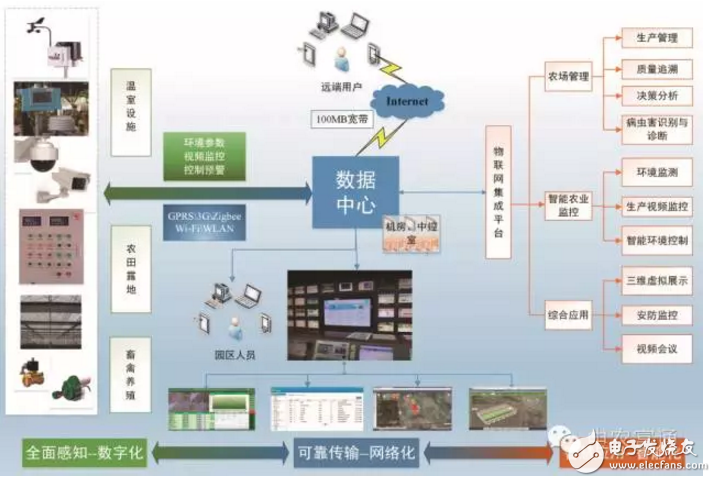Traditional agriculture, watering, fertilizing, and fighting drugs, farmers rely on experience and feeling. Now, should the fruits and vegetables be watered? How to maintain precise concentration by fertilizing and fighting drugs? How to implement on-demand supply of temperature, humidity, light, and carbon dioxide concentration? A series of crops have been "fuzzified" in different growth cycles. All of them have real-time quantitative "precise" checks on information-based intelligent monitoring systems. Farmers only need to press a switch, make a choice, or listen to the "command" completely. Can grow good food and raise flowers. This is behind the formal IoT. Agricultural Internet of Things, which uses temperature sensors, humidity sensors, Ph-value sensors, light sensors, CO2 sensors, etc. of the Internet of Things system to detect physical quantities such as temperature, relative humidity, Ph value, light intensity, soil nutrient, and CO2 concentration. Parameters, participate in automatic control through real-time display of various instruments or as a parameter of automatic control to ensure a good and suitable growth environment for crops. The realization of remote control allows the growers to monitor and control the environment of multiple greenhouses in the office. Using wireless networks to measure the optimal conditions for obtaining crop growth can provide a scientific basis for precise regulation of greenhouses, increasing production, improving quality, regulating growth cycles, and improving economic efficiency. Figure: Architecture of the Agricultural Internet of Things Agricultural Internet of Things, which uses temperature sensors, humidity sensors, Ph-value sensors, light sensors, CO2 sensors, etc. of the Internet of Things system to detect physical quantities such as temperature, relative humidity, Ph value, light intensity, soil nutrient, and CO2 concentration. Parameters, participate in automatic control through real-time display of various instruments or as a parameter of automatic control to ensure a good and suitable growth environment for crops. The realization of remote control allows the growers to monitor and control the environment of multiple greenhouses in the office. Using wireless networks to measure the optimal conditions for obtaining crop growth can provide a scientific basis for precise regulation of greenhouses, and achieve the purpose of increasing production, improving quality, regulating growth cycle, and improving economic efficiency. Agricultural Internet of Things has been welcomed by agricultural production personnel for its efficiency, convenience and intelligence. At present, the application fields of agricultural internet of things mainly include the following aspects: 1. Picking control system In general, the area planted or cultivated in agricultural parks far exceeds that of traditional farmers, and traditional agricultural production is based on manual observation and experience to determine the harvest time of crops. This method often misses the best harvest time and reduces the time. The commodity value of agricultural products affects the economic benefits of enterprises. Set up the IoT harvesting control system, which can automatically predict the harvest period of crops through set harvest time and polling (inquiring detectors in turn) to increase the value of commodities, reduce labor consumption costs, and improve the scale of production management capabilities of enterprises. . 2. Processing control system At present, domestic agricultural products enterprises mostly use semi-manual and semi-machines for crop planting and processing of aquaculture products, and artificial occupation is dominant. Due to the uneven processing level of workers and the insecure processing environment, the quality of products is not guaranteed and microbial contamination is likely. The establishment of a processing control system can reduce manual direct processing, avoid artificial pollution, and effectively improve production efficiency through the control of automated production technologies such as cleaning, preservation, and drying. 3. Acquisition, circulation control and sales control system Aiming at the demand for acquisition, circulation and sales involved in the process of post-production commercialization of agricultural products and the acquisition of market information, the acquisition control system, circulation control system and sales system are constructed to obtain information on the price changes of agricultural products and market supply and demand in various links; At the same time, it can track all aspects of agricultural products and ensure the safety of agricultural products in the process of circulation. 4. Video surveillance system Combine video surveillance system with planting and breeding supervision, pest and disease early warning and prevention, processing control and other systems to realize visual tracking of agricultural production, processing and circulation, facilitate technicians to observe and take effective measures in time to ensure production, processing and circulation. Going smoothly. 5. Traceability system The establishment of traceability information service platform, its information collection covers animal and plant seed procurement, sowing (breeding), fertilization, harvesting, processing, transportation, and access to supermarkets. At the same time, it can also introduce and facilitate third-party supervision and strengthen the right The quality management of the production process of agricultural products provides convenience for the inquiries of the safety of various production links of agricultural products and the traceability from the table to the place of origin. 1. The sensor will develop into a micro-intelligence, and the perception will be more thorough. The types and quantities of agricultural IoT sensors will grow rapidly and the applications will become increasingly diverse. In recent years, new technologies such as microelectronics and computers have emerged and adopted, which will further improve the intelligence and perception of sensors. 2. Mobile internet applications will be more convenient and network interconnection will be more comprehensive Mobile broadband interconnection is becoming a breakthrough in the new generation of information industry revolution. Broadband, mobile, intelligent, personalized, and multi-functional are leading the development of the information society. 3. Internet of Things will be deeply integrated with cloud computing big data, technology integration will be more optimized Cloud computing can help smart agriculture realize the distributed sharing of information storage resources and computing power. The information processing capability of big data will provide support for massive information processing and utilization. 4. Internet of Things will develop to smart services, and applications will be more extensive With the continuous development of key technologies of the Internet of Things and the maturity of the industry chain, IoT applications will expand from industry applications to personal and home applications. The software system of the agricultural Internet of Things will be able to adjust its behavior in a timely manner according to the changes of the environment and the needs of the system operation, providing intelligent and flexible services that are environmentally aware, and further improving the adaptive ability. For a variety of agricultural solution providers, the biggest challenge, or opportunity, is how to provide deeper, more valuable, and sustainable services in addition to products. What farmers care about is the result. During the product life cycle, the service providers need to improve their added value through continuous improvement of functions and bring them real benefits. With the support of China Agricultural University, the Chinese Academy of Agricultural Sciences, the National Agricultural Information Technology Research Center and other scientific research institutions, Zhongnong Futong has formed a close relationship with seven international companies in four countries including Spectrum Corporation and Athens Agricultural University. The cooperation relationship, the introduction of domestic and foreign information technology industry leading technology, close integration of agricultural production practices, to achieve China's "four synchronizations", improve agricultural modernization development, further integration of scientific and technological resources, quality products, practical technology, to provide sustainable sustainable parks Development and simple and practical integrated agricultural information solutions. To provide customers with a comprehensive plan for agricultural Internet of Things, comprehensive application programs, project implementation, agricultural technology services, and other comprehensive agricultural information services, design facilities for horticulture, field planting, animal husbandry, aquaculture and other applications. Network Accessories,Wifi Adapter,Fiber Optic Network Components,Splitter Fiber Optic Cixi Dani Plastic Products Co.,Ltd , https://www.danifiberoptic.com

